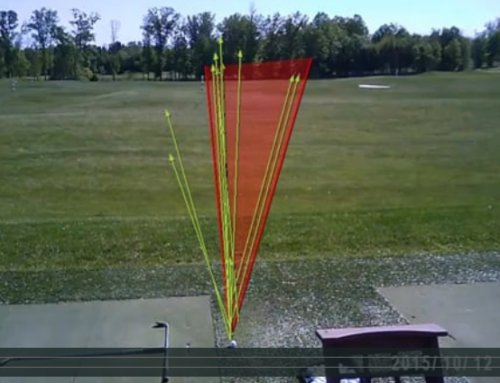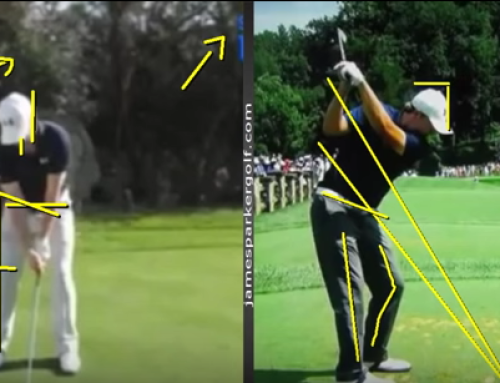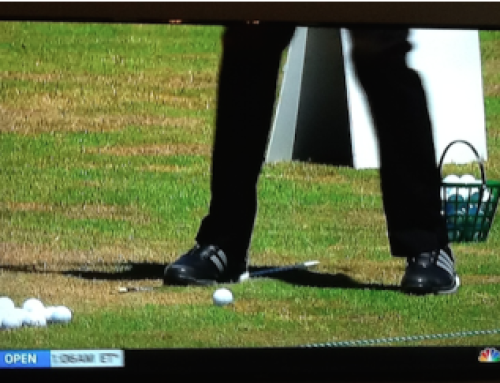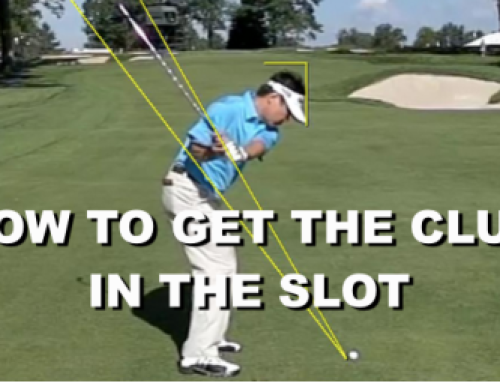Project Description
 Of course when I say bacon strip divots I mean nice shallow divots that occur after the ball has been struck.
Of course when I say bacon strip divots I mean nice shallow divots that occur after the ball has been struck.
To do this we need to accomplish a few things on the downswing.
Firstly, we need the club on plane. This is where most amateurs go wrong as their plane is too steep coming down which leads to the path of the club through impact being too straight.
Getting the club on plane in the downswing will produce a nice inside path into the ball, and assuming you’ve achieved some lag during the downswing will produce an attack angle that is descending but not by much.
Yes, it’s a game of opposites – to curve the ball left – swing to the right
To curve the ball right – swing to the left
To make the ball go up – swing down
But this ‘swinging down’ term often gets people in trouble. To understand what we want the club to do through impact we should really be saying something like ‘swing down, and from the inside’.
All the best ball strikers hold the club almost as though they are caressing it. There’s no real squeezing except in the last three fingers of the left hand (the top hand).
This allows the forearms to also stay relaxed and this in turn allows the the club to swing in the hands. We want to feel as through we are dragging the club back and dragging the club down – Imagine swinging in a swimming pool and the water causing a dragging sensation in the hands.
Once you reach the top, the weight of the club head resists the change of direction and assuming you have your hands on the club correctly, you’ll feel pressure build up in the first pad of the right hand trigger finger.
Once you feel this pressure build up during a patient transition into the downswing, your job then is to maintain that pressure in the trigger finger all the way until after impact.
You can easily feel this if you start to bow your left wrist during the downswing.
It’s a lot easier to show you with some real life examples so here’s a short video.







